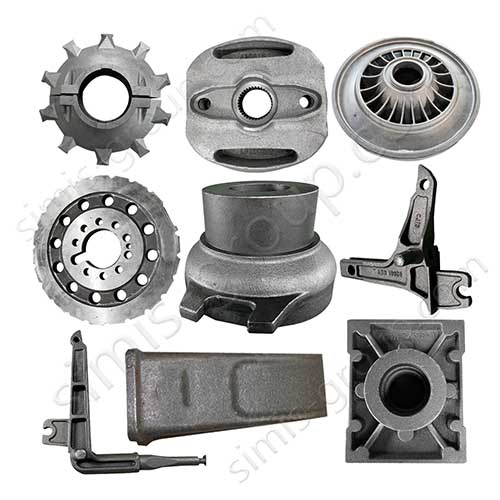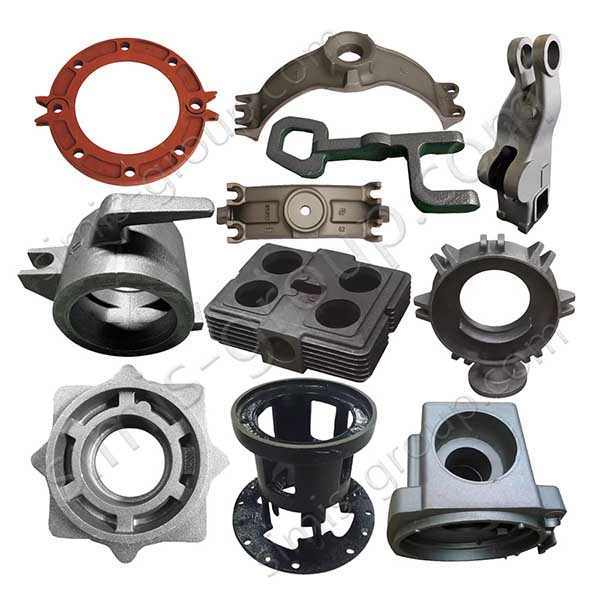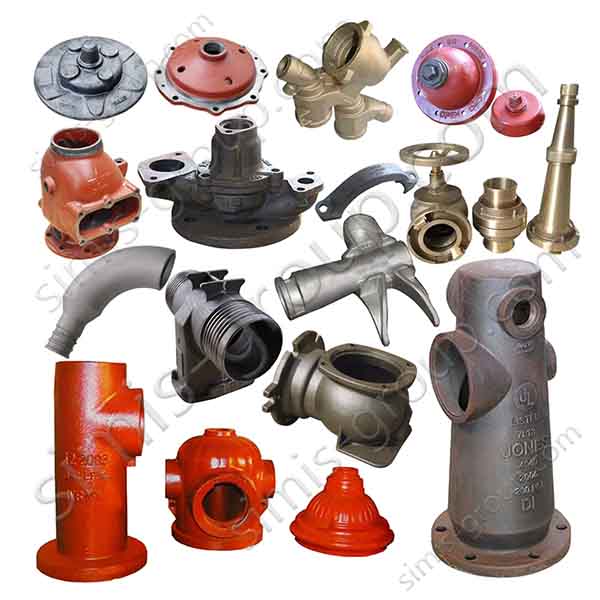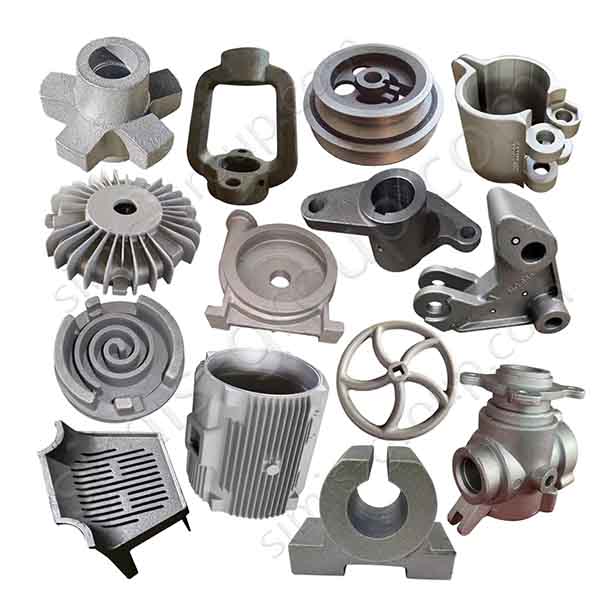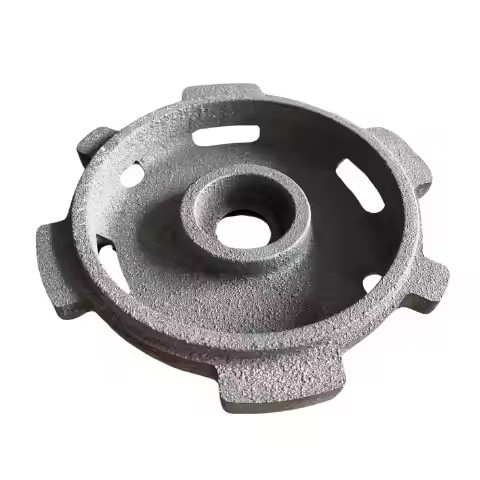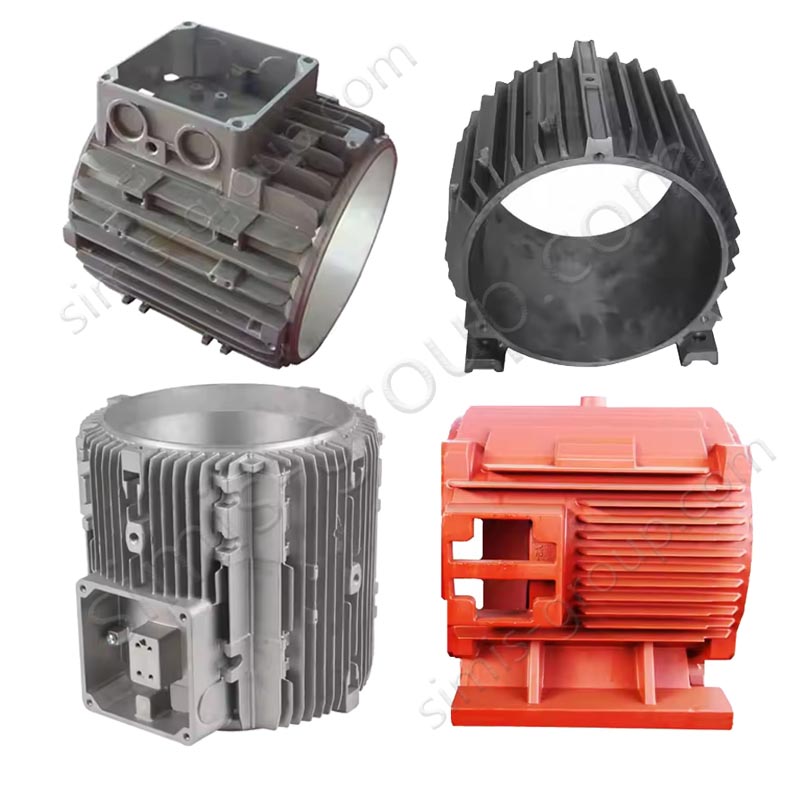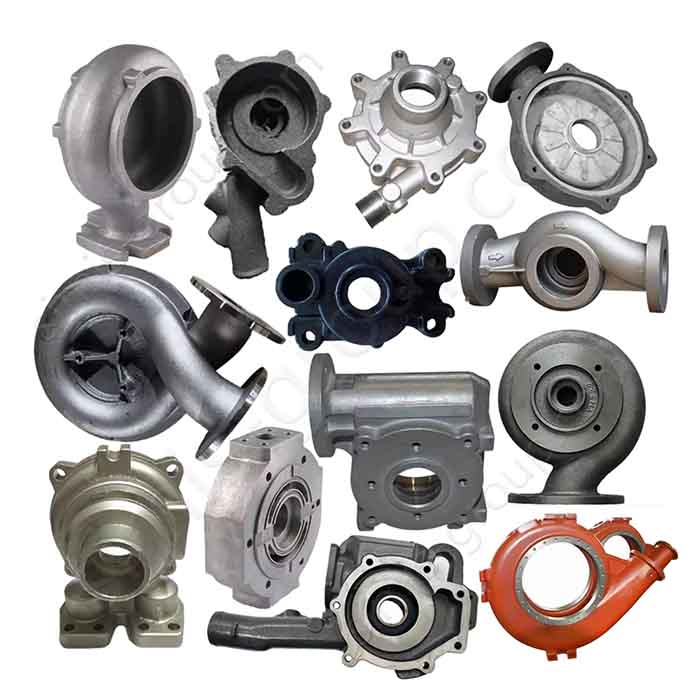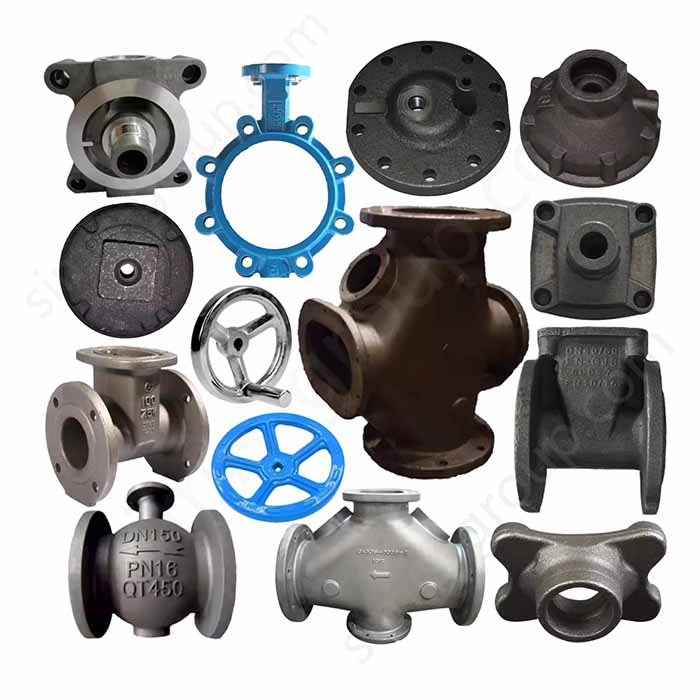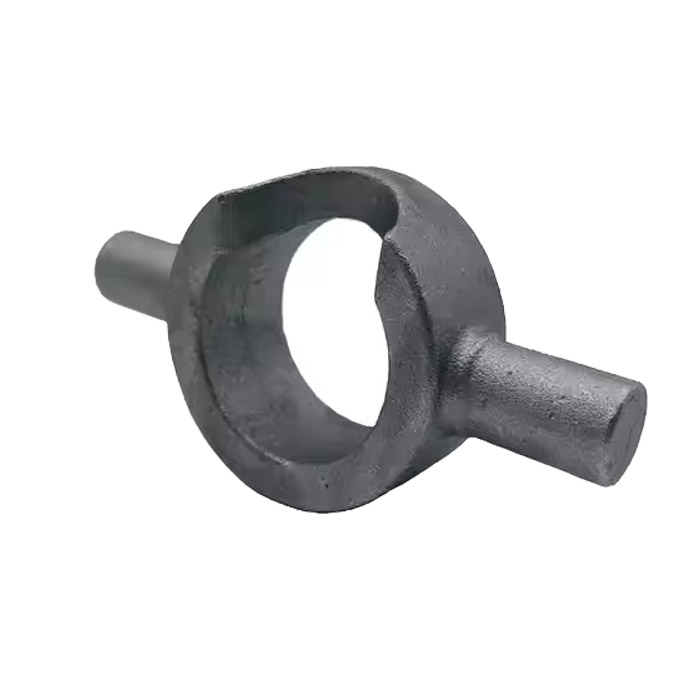FCD400 Ductile Iron Performance And Applications In Casting
FCD400 is a ductile iron material with excellent comprehensive properties. Its minimum tensile strength is 400 MPa, and its elongation can exceed 15%. It is widely used in various iron casting components. In terms of casting technology, FCD400 uses magnesium or magnesium alloy spheroidization to achieve spherical graphite distribution, and inoculation treatment to achieve an ideal ferrite-pearlite matrix structure. This material offers excellent casting, mechanical, and processability, making it particularly suitable for the production of complex castings requiring high strength and toughness, such as automotive parts, piping systems, and mechanical structures. The FCD400 casting process requires strict control of chemical composition, spheroidization technology, and cooling rate to ensure a stable spheroidization rate and an ideal matrix structure.
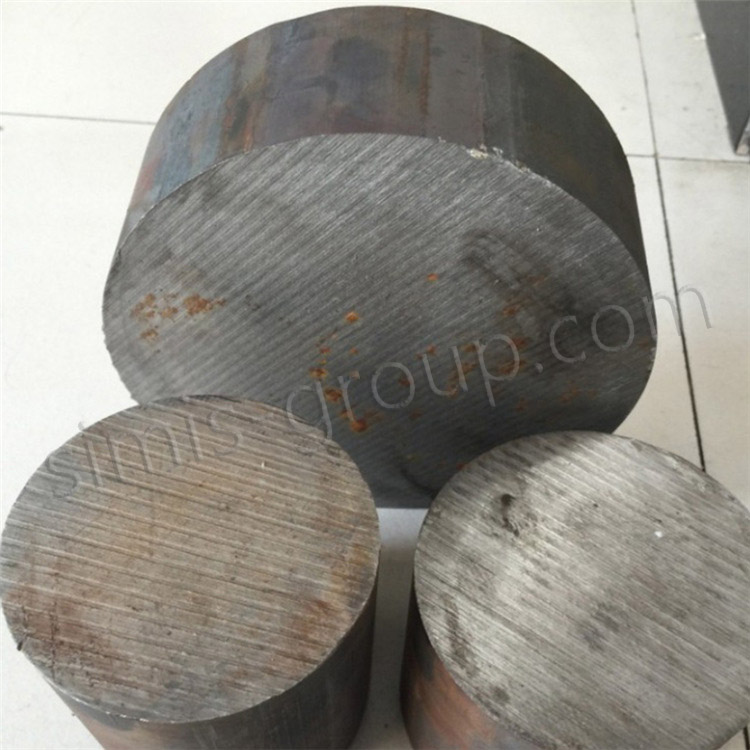
1. Overview of FCD400 Material
FCD400 is a ductile cast iron material widely used in industrial applications. Its name originates from the international standard nomenclature system, where "FCD" stands for ductile cast iron, and "400" indicates its minimum tensile strength of 400 MPa. This material holds a significant position in modern foundry industries due to its excellent mechanical properties, good castability, and relatively economical production costs.
FCD400 Discovery
As an important member of the cast iron family, the history of ductile cast iron dates back to the 1940s. In 1943, researchers at the International Nickel Company (INCO) in the United States, including K.D. Millis, successfully produced spheroidal graphite cast iron by adding magnesium alloys to molten iron. This breakthrough fundamentally changed the flake graphite structure characteristic of traditional cast iron. FCD400 was developed as a standardized material based on this technological foundation and has become a fundamental material for various mechanical structural components after decades of process optimization and application practice.
Material classification of FCD400
From a material classification perspective, FCD400 belongs to ferritic-pearlitic matrix ductile cast iron. Its metallographic structure primarily consists of spheroidal graphite, ferrite, and pearlite. Compared to ordinary gray cast iron, the graphite in ductile cast iron is distributed in a spheroidal form, which significantly reduces the splitting effect of graphite on the metal matrix. This allows the material to maintain the excellent casting performance and damping capacity of cast iron while substantially improving strength and plasticity. The typical chemical composition range specified for FCD400 material is: carbon (C) 3.6-3.8%, silicon (Si) 2.4-2.8%, manganese (Mn) 0.1-0.4%, phosphorus (P) <0.05%, sulfur (S) <0.02%, and magnesium (Mg) 0.03-0.05%. Precise control of chemical composition is a prerequisite for obtaining stable material properties.
In the international standard system, FCD400 corresponds to EN-GJS-400-15 in ISO 1083 standard, where 400 represents the tensile strength (MPa), and 15 indicates the elongation (%). In the American ASTM standard, the similar material is ASTM A536 60-40-18; in the Chinese national standard GB/T, the corresponding designation is QT400-15. This multi-standard correspondence reflects the widespread global application and recognition of FCD400.
2. Physical and Mechanical Properties of FCD400
FCD400 material exhibits a series of excellent physical and mechanical properties that make it outstanding in engineering applications. Regarding physical properties, the density of FCD400 is approximately 7.1-7.2 g/cm³, slightly lower than that of steel, which is an advantage in weight-sensitive applications. Its thermal conductivity in the 20-100°C range is about 36-42 W/(m·K), comparable to ordinary carbon steel but lower than pure iron. The linear expansion coefficient in the 20-200°C temperature range is approximately 11.5×10⁻⁶/°C, similar to ordinary carbon steel, indicating good thermal matching when used with steel components. The electrical resistivity is about 0.50-0.65 μΩ·m, representing typical conductive characteristics of iron-based alloys.
Mechanical properties
Mechanical properties are the most prominent advantages of FCD400. According to standard requirements, FCD400 must have a tensile strength of at least 400 MPa, yield strength of at least 250 MPa, and elongation of at least 15%. In actual production, high-quality FCD400 castings can achieve tensile strengths of 420-450 MPa, yield strengths of 280-320 MPa, and elongations of 18-25%. This good combination of strength and plasticity enables the material to withstand complex stress states. In terms of hardness, the Brinell hardness (HB) of FCD400 typically ranges between 130-180, providing both wear resistance and good machinability.
Impact toughness
The impact toughness of FCD400 is significantly better than that of ordinary gray cast iron. At room temperature, the Charpy V-notch impact energy can reach 14-20 J, and even at -20°C, it can maintain 8-12 J of impact energy. This good low-temperature toughness makes it suitable for engineering components in cold environments. Regarding fatigue performance, the rotating bending fatigue limit of FCD400 is approximately 180-220 MPa, about 45-55% of its tensile strength. This ratio is higher than most cast iron materials, indicating its strong resistance to alternating loads.
Damping capacity
Particularly noteworthy is the damping capacity of FCD400. Its vibration attenuation ability is 6-10 times that of carbon steel, making it highly suitable for applications requiring vibration and noise reduction, such as machine tool bases and engine mounts. Additionally, FCD400 maintains the inherent good wear resistance and anti-galling properties of cast iron materials, performing exceptionally well in friction pairs with poor lubrication conditions.
Regarding material anisotropy, due to the characteristics of the casting process, FCD400 may exhibit slight performance differences in different directions. However, through proper spheroidization and inoculation treatments, this anisotropy can be controlled at very low levels. Compared to similar materials, FCD400 has slightly lower strength than higher-grade ductile cast irons like FCD500 and FCD600 but offers better plasticity and toughness. Compared to ordinary gray cast irons HT250 and HT300, FCD400 provides similar strength but with elongation more than ten times higher. Compared to carbon steel, FCD400 offers comparable strength to low-carbon steel while providing better castability and damping performance.
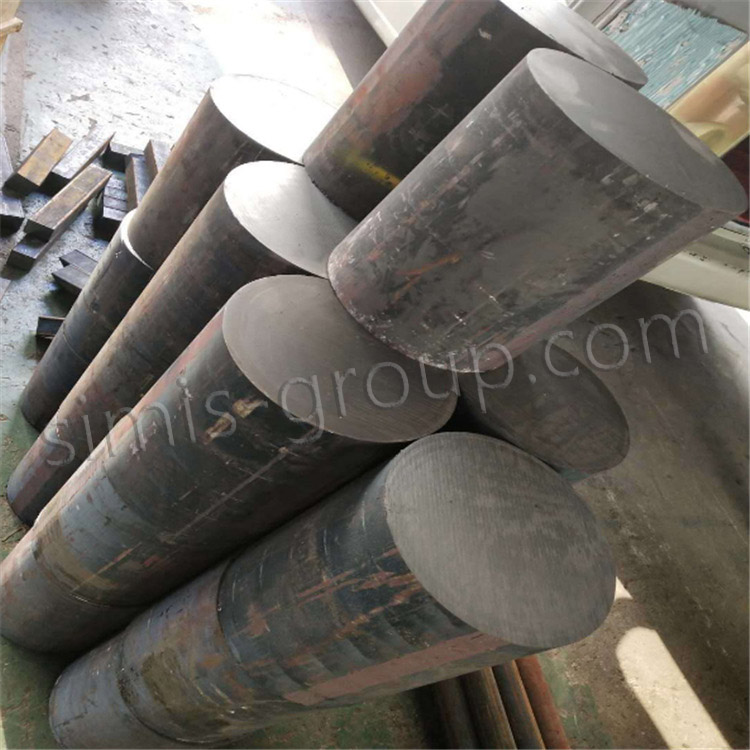
3. Casting Process Characteristics of FCD400
The casting process characteristics of FCD400 are the foundation of its wide application. This material exhibits a series of features during melting, treatment, and pouring that require special process controls to ensure final casting quality. The entire casting process includes raw material preparation, melting, spheroidization treatment, inoculation treatment, pouring, cooling, and heat treatment, with each step significantly impacting the final product performance.
Melting
The melting process is the first critical step in FCD400 production. Typically, a duplex melting process using a cupola furnace and electric furnace is employed. The cupola furnace provides efficient melting and superheating, while the electric furnace (usually medium-frequency induction furnace) is used for precise composition adjustment and temperature control. The melting temperature is generally controlled between 1500-1550°C. Excessively high temperatures increase magnesium loss, while excessively low temperatures are detrimental to impurity removal and composition homogenization. Rapid front analysis technology is indispensable in modern FCD400 production. Spectroscopic analysis can provide accurate chemical composition data of molten iron within 3-5 minutes, serving as the basis for subsequent treatments.
Spheroidization treatment
Spheroidization treatment is the core process that distinguishes FCD400 from ordinary cast iron. The commonly used spheroidizing agent is rare earth magnesium alloy, typically containing 5-10% magnesium (Mg), 3-8% rare earth (RE), with the remainder being silicon and iron. Magnesium is the primary spheroidizing element, but its low boiling point (1107°C) causes violent vaporization in molten iron, necessitating alloying to reduce its activity. Rare earth elements can neutralize the harmful effects of interfering elements (such as Sb, Pb, and Ti) and improve spheroidization stability. The spheroidization treatment generally uses the sandwich method, where the spheroidizing agent is placed in the reaction chamber at the bottom of the ladle, covered with ferrosilicon inoculant and steel plates, and then treated by pouring molten iron into the ladle. Advanced processes employ the tundish cover method or in-mold spheroidization to reduce magnesium loss and improve spheroidization efficiency.
Inoculation treatment
Inoculation treatment has a decisive influence on the microstructure and properties of FCD400. The purpose of inoculation is to provide nucleation sites for graphite, promote the formation of fine and uniform graphite spheroids, and prevent carbide precipitation. The commonly used inoculant is 75% ferrosilicon alloy, with small additions of long-lasting inoculation elements such as strontium (Sr) and barium (Ba). Modern processes emphasize the concept of "instantaneous inoculation," where fine inoculant particles (0.2-0.7 mm) are added at the last moment before pouring, usually through flow inoculation or in-mold inoculation, to maximize the inoculation effect. The inoculation amount is typically 0.3-0.8% of the molten iron weight, adjusted according to casting wall thickness and cooling rate.
Gating system
The gating system design is equally crucial for FCD400 casting quality. Due to graphite expansion during solidification of ductile cast iron, the gating and risering system should be designed following the "directional solidification" principle to fully utilize self-feeding capability. The pouring temperature is generally controlled between 1350-1420°C, with higher temperatures for thin-walled castings and lower temperatures for thick-walled castings. The pouring speed should be moderate; excessive speed causes turbulence and slag entrapment, while insufficient speed may lead to spheroidization fading. To reduce secondary oxidation slag, open-bottom gating systems are often used, with ceramic filters installed to purify the molten iron.
Cooling control
Cooling control is key to obtaining the desired matrix structure. FCD400 is typically ferrite-dominant, requiring promotion of graphitization. For thick-walled castings, delayed shakeout can be employed, allowing the casting to cool slowly in the mold through the eutectoid transformation temperature range (750-700°C) to facilitate complete carbon diffusion and ferrite formation. For complex castings, specialized cooling channels or chills may be needed to regulate local cooling rates.
Heat treatment
Regarding heat treatment processes, FCD400 often undergoes annealing to achieve high toughness. Annealing processes include high-temperature graphitization annealing (900-950°C for 2-4 hours, furnace cooling to 700°C followed by air cooling) and low-temperature annealing (720-760°C for 3-6 hours, furnace cooling). The former is used to eliminate pearlite and carbides in the as-cast structure, while the latter relieves internal stresses and further increases ferrite content. Precise control of heat treatment processes can achieve the desired ferrite/pearlite ratio for different application requirements.
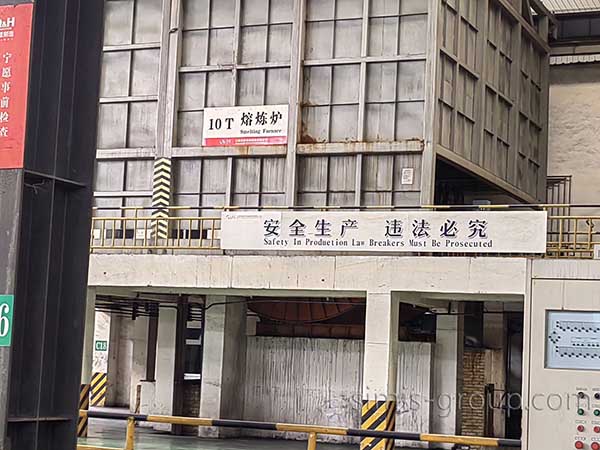
4. Metallographic Structure and Quality Control of FCD400
The metallographic structure characteristics of FCD400 are the microstructural basis of its excellent properties. A deep understanding of its structural composition and influencing factors is crucial for quality control. The typical metallographic structure of FCD400 consists of spheroidal graphite, ferrite matrix, and a small amount of pearlite, with possible minor amounts of carbides and inclusions. The morphology, quantity, and distribution of each structural component directly affect the material's final properties.
Graphite morphology
Graphite morphology is the primary indicator for evaluating ductile cast iron quality. In high-quality FCD400, graphite should be predominantly spheroidal, with a nodularity exceeding 80% (assessed according to ISO 945 standard). The graphite spheroids should be moderate in size (mostly 20-60 μm in diameter) and uniformly distributed, without obvious exploded, vermicular, or flake graphite. The graphite nodule count is typically controlled between 100-150 nodules/mm²; excessively high counts may degrade performance. When assessing graphite nodularity grade, the worst area in the field of view is usually taken as representative, and the nodularity level (Grade I-VI, with I being the best) is determined by comparison.
Matrix structure
Regarding matrix structure, standard FCD400 should be primarily ferritic (usually over 80%), with a small amount of pearlite permitted (generally not exceeding 20%). Ferrite appears as bright polygonal grains, while pearlite appears as lamellar dark areas. Under as-cast conditions, due to differences in cooling rates, different parts of the casting may exhibit varying matrix structures: thin sections cool faster and may form more pearlite; thick sections cool slower and have higher ferrite content. Heat treatment can homogenize these differences.
Carbides
The presence of carbides significantly reduces the plasticity and machinability of FCD400, so their content should generally be controlled below 1-2% in most applications. Carbides often appear as skeletal or network forms at grain boundaries, particularly in thin sections or sharp corners. Phosphide eutectic is another harmful structure caused by high phosphorus content, appearing as polygonal island shapes that reduce impact toughness.
Inclusion control
Inclusion control is another important aspect of FCD400 quality evaluation. Common inclusions include sulfides (MnS), silicates, and magnesium-aluminum oxides. These inclusions may become crack initiation sites, affecting the material's fatigue performance. High-quality FCD400 should have low inclusion content, with fine sizes and dispersed distribution.
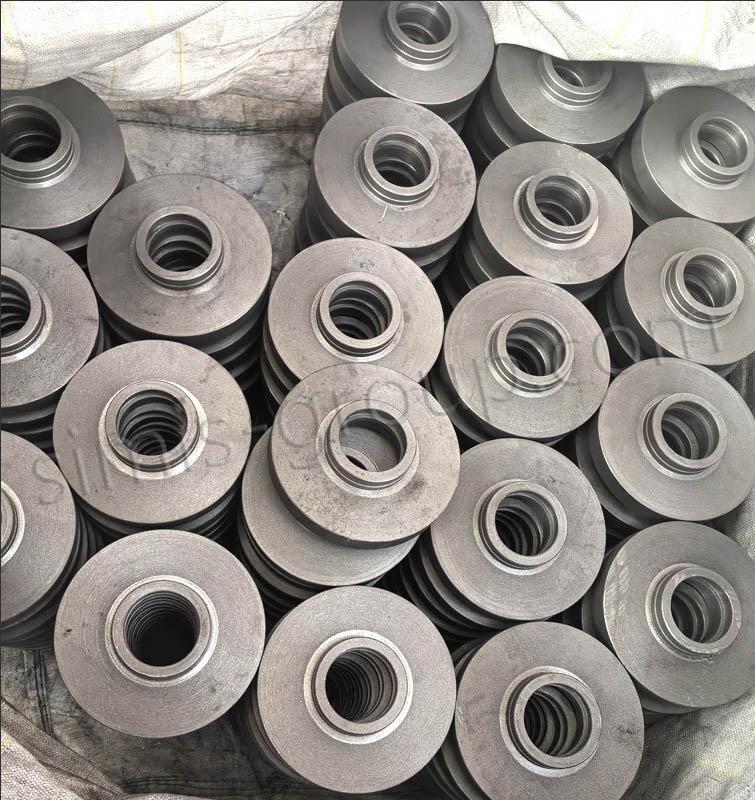
5. The quality control system for FCD400
The quality control system for FCD400 includes chemical composition control, mechanical property testing, metallographic inspection, and non-destructive testing. Chemical composition analysis is a fundamental control method, with particular emphasis on controlling interfering elements: titanium (Ti) <0.05%, lead (Pb) <0.002%, antimony (Sb) <0.002%, and bismuth (Bi) <0.002%. Even trace amounts of these elements can significantly affect spheroidization. Mechanical property testing typically uses separately cast test bars (such as Φ30 mm bars per ISO standard) to evaluate tensile strength, yield strength, elongation, and hardness.
Metallographic inspection is the core of FCD400 quality control, including nodularity assessment, graphite size and distribution analysis, matrix structure evaluation, and carbide and inclusion detection. Modern image analysis software can automatically count graphite nodule quantity, size, and roundness, improving objectivity and efficiency. For critical castings, non-destructive testing such as ultrasonic inspection, radiographic testing, or magnetic particle inspection should also be conducted to detect internal shrinkage porosity, gas holes, or cracks.
Process control is key to ensuring consistent FCD400 quality. Advanced foundries employ statistical process control (SPC) methods to monitor and analyze trends in key process parameters such as molten iron temperature, spheroidizer addition amount, inoculation amount, and magnesium residual content in real-time, enabling timely identification and correction of deviations. Computer-aided quality management systems can integrate data from spectrometers, thermal analyzers, mechanical testers, and metallographic analysis systems to achieve comprehensive quality traceability.
Typical defect analysis and prevention are important lessons learned in FCD400 production. Common casting defects include poor spheroidization (manifested as inferior graphite morphology), shrinkage porosity (caused by insufficient feeding), slag inclusion (improper gating system design or inadequate molten iron purification), subsurface porosity (excessive mold moisture or gas generation from magnesium reaction), and carbide segregation (rapid cooling or insufficient inoculation). For each defect, there are corresponding preventive measures and remedies, such as optimizing spheroidization processes, improving gating and risering systems, enhancing molten iron filtration, or adjusting cooling rates.

6. Typical Applications of FCD400 in Casting
FCD400 is widely used in casting components across numerous industrial sectors due to its excellent comprehensive properties. Its typical applications can be broadly categorized into automotive industry, general machinery, piping systems, construction structures, and other specialized applications, with each field leveraging specific advantages of FCD400.
Automotive manufacturing sector
In the automotive manufacturing sector, FCD400 is the material of choice for many critical components. Engine system parts such as crankshafts, camshafts, gears, and pulleys are extensively made from FCD400. These components must withstand alternating loads while providing good vibration damping and noise reduction. Particularly for engine crankshafts, replacing forged steel with FCD400 not only reduces manufacturing costs by 20-30% but also improves fatigue life and damping performance. Chassis system safety components like steering knuckles, control arms, and hubs also widely use FCD400, with its high strength and good toughness ensuring driving safety. Statistics show that modern mid-size passenger cars contain approximately 30-50 kg of ductile iron castings, most of which are FCD400 or equivalent grades.
General machinery
General machinery represents another important market for FCD400. Various pump casings, valve bodies, compressor cylinders, and hydraulic components are largely made from FCD400 castings. These parts typically have complex shapes and require good castability and pressure tightness. In machine tool industry, bases, columns, and tables utilize FCD400's high rigidity and excellent damping characteristics to improve machining accuracy and stability. Transmission system components like gearboxes, clutch housings, and differential cases are also commonly made from FCD400, with its good machinability facilitating precision machining of mating surfaces.
Piping system
In piping system applications, FCD400 is primarily used to manufacture water and gas pipeline fittings and valves of various specifications. Compared to traditional gray iron fittings, FCD400 fittings offer higher pressure resistance (up to PN40), better seismic performance, and longer service life. Large ductile iron pipeline systems can extend for dozens of kilometers, with joints using bell-and-spigot or flanged connections for convenient and reliable installation. In municipal water supply and drainage systems, FCD400 pipes have essentially replaced gray iron pipes as the mainstream choice.
Construction and structural
In construction and structural applications, FCD400 is commonly used for heavy machinery bases, bridge bearings, building connectors, and decorative elements. Its high strength and good plasticity allow for more flexible structural designs with excellent seismic performance. In recent years, some architects have begun using FCD400 for art castings and architectural decorations, leveraging its good surface quality and weather resistance to create unique aesthetic effects.
Specialized applications
For specialized applications, FCD400 is used to manufacture large components like hubs and main bearing housings in wind turbine generators, with single pieces weighing up to several tons; railway transportation components like bogies and braking system parts; and marine engineering components like seawater-resistant mooring parts and subsea pipeline fittings. These applications often have special requirements for low-temperature toughness, corrosion resistance, or fatigue performance, which can be met by adjusting FCD400's chemical composition and heat treatment processes.
Case studies of typical applications help deepen understanding of FCD400's actual performance. For example, when FCD400 replaces traditional forged steel in automotive crankshafts, it not only reduces weight by 10-15% and costs by 20-30%, but also more than doubles fatigue life and reduces engine vibration by 3-5 decibels. This is mainly attributed to the "micro-bearing" effect of graphite spheroids and the material's inherent damping characteristics. Another example is large ductile iron valves: a DN1200 FCD400 gate valve can withstand 1.6 MPa working pressure with a service life exceeding 30 years and requiring almost no maintenance, thanks to the material's excellent corrosion and wear resistance.
As casting technology advances, FCD400's application scope continues to expand. Recently, austempered ductile iron (ADI) developed through isothermal quenching processes has further enhanced material performance, while FCD400-based composites (such as alloy-reinforced surfaces by cast penetration) have opened new application fields. Under the trend of lightweight design, the successful development of thin-wall high-strength FCD400 castings enables replacement of some aluminum alloy applications, maintaining performance while reducing costs.
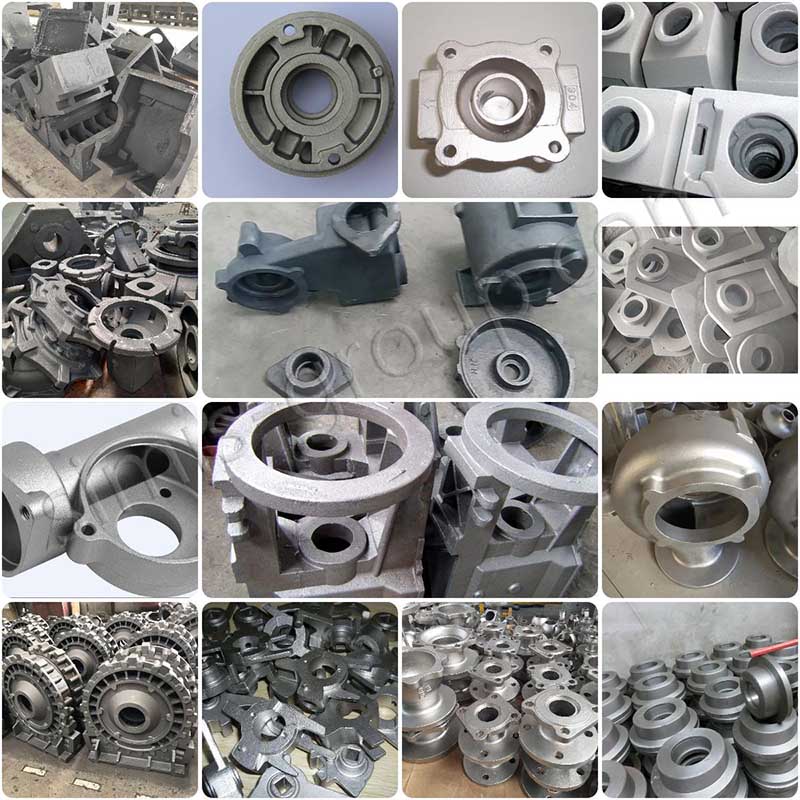
7. Development Trends and Prospects of FCD400
Although FCD400 material has been applied for decades, its development remains vibrant with advancements in materials science and casting technology. Current research and applications of FCD400 show several clear development trends that will shape the future of ductile iron materials.
High performance is one of the main directions for FCD400 development. Research focuses on improving strength while maintaining good plasticity through composition optimization and process improvements. Microalloying technology is increasingly applied, with additions of trace elements like copper (Cu), nickel (Ni), and molybdenum (Mo) refining the matrix structure and enhancing material properties. Studies show that adding 0.2-0.5% copper to FCD400 increases pearlite content by 10-15%, tensile strength by 50-80 MPa, while maintaining elongation above 12%. Another approach involves developing new spheroidizers and inoculants, such as composite spheroidizers containing bismuth (Bi) or antimony (Sb), which can achieve stable spheroidization across a wide range of cooling rates.
Large-scale and thin-wall developments are two seemingly contradictory yet unified directions for FCD400 castings. On one hand, with improved casting equipment capabilities, ultra-large FCD400 castings weighing over 100 tons have become possible, such as large hydroturbine casings and wind turbine hubs. On the other hand, automotive lightweighting demands drive thin-wall FCD400 casting development, with minimum wall thickness reduced from traditional 5-6 mm to 3-4 mm, posing higher requirements on casting processes. Advancements in simulation technology enable both directions, with solidification simulation optimizing feeding systems for large castings and flow simulation predicting filling processes for thin-wall castings.
Green manufacturing concepts are profoundly influencing FCD400 production methods. Reducing energy consumption and environmental pollution are current research priorities. In melting, high-efficiency induction furnaces and waste heat recovery technologies can reduce energy consumption by 20-30%; in spheroidization, low-fume spheroidizers and enclosed treatment processes minimize magnesium fume emissions; in scrap utilization, increasing returns (up to 60-80%) and developing new purification technologies are effective approaches. Some foundries are experimenting with biomass materials to replace portion of coke, further reducing carbon emissions.
Intelligent production is an inevitable trend in FCD400 manufacturing technology upgrades. Modern foundries are gradually achieving full-process digital control from raw materials to finished products. Intelligent melting systems enable precise composition control through online spectroscopy and adaptive control; intelligent spheroidization systems adjust spheroidizer additions in real-time based on thermal analysis and kinetic models; intelligent pouring systems automatically regulate pouring speed and temperature according to mold conditions and molten iron status. These intelligent technologies significantly improve FCD400 production stability and consistency while reducing human factor influences.
In recycling and sustainability, FCD400 shows distinct advantages. Ductile iron itself is 100% recyclable, with the recycling process consuming only 30-40% of the energy required for primary metal production. As circular economy concepts gain traction, FCD400 castings are designed for easy disassembly and recyclability, such as minimizing material combinations and standardizing connection methods. In the future, FCD400 recycling systems will become more sophisticated, forming a true "production-use-recycling-reproduction" closed-loop system.
Looking ahead, FCD400 will maintain its importance for the foreseeable future. On one hand, traditional applications in automotive, piping, and machinery will continue to grow; on the other hand, emerging fields like renewable energy equipment, environmental protection devices, and smart infrastructure will provide new growth opportunities. Material development will focus on: developing specialized FCD400 materials for extreme environments (such as ultra-low temperatures or strong corrosion); researching smart FCD400 materials with self-healing capabilities; and exploring new forming technologies like 3D printing for FCD400 manufacturing.
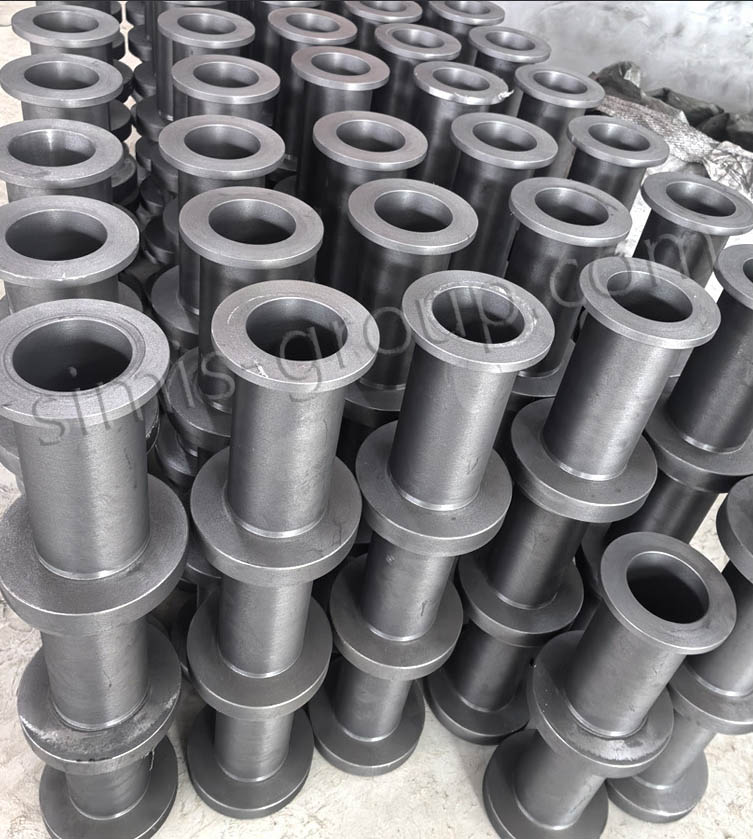
As a professional iron foundry, Simis Group offers high-quality custom FCD400 ductile iron casting services. Leveraging advanced casting equipment and extensive production experience, we can produce a wide range of complex shapes and specifications of FCD400 castings based on customer drawings and technical specifications. From automotive parts and construction machinery components to piping system components, our FCD400 castings guarantee excellent mechanical properties (tensile strength ≥400 MPa, elongation ≥15%) and consistent quality. Simis Group rigorously controls key production steps, including spheroidizing, inoculation, and heat treatment, to ensure castings exhibit a high spheroidization rate (≥80%) and an ideal ferrite matrix structure. We offer comprehensive FCD400 casting solutions, from design optimization and process development to mass production, to meet the application needs of diverse industries.


